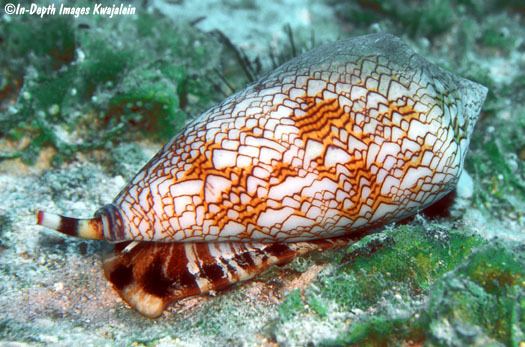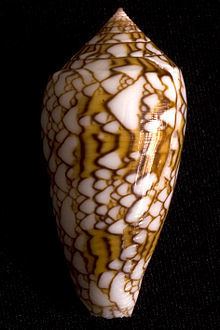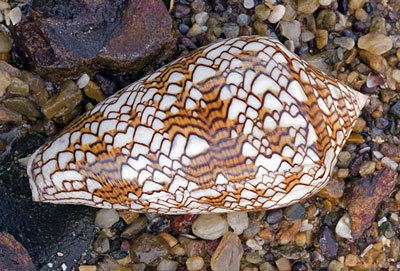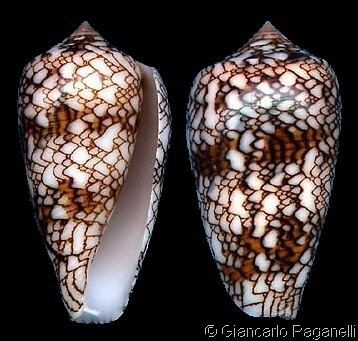Rank Species | Clade Hypsogastropoda Higher classification Conus | |
 | ||
Similar Conidae, Conus geographus, Conus marus, Molluscs, Gastropods | ||
Conus textile hunting a turbo snail
Conus textile, common name the textile cone or the cloth of gold cone is a venomous species of sea snail, a marine gastropod mollusk in the family Conidae, the cone snails, cone shells or cones.
Contents
- Conus textile hunting a turbo snail
- Conus marmoreus bandanensis vs conus textile
- List of synonyms
- Subspecies
- Shell description
- Distribution
- Life cycle
- Feeding habits
- References

Like all species within the genus Conus, these snails are predatory and venomous. They are capable of "stinging" humans, therefore live ones should be handled carefully or not at all. The conotoxin of this species is extremely dangerous to humans.

Conus marmoreus bandanensis vs conus textile
List of synonyms

Subspecies

Shell description
Typical length of adults is about 9 cm to 10 cm (3.5 in to 3.9 in). The maximum shell length for this species is 15 cm (5.9 in). The color pattern of its shell resembles a cellular automaton named Rule 30. The color of the shell is yellowish brown, with undulating longitudinal lines of chocolate, interrupted by triangular white spaces. These last are irregularly disposed, but crowded at the shoulder, base and middle so as to form bands. The spire is similarly marked. The aperture is white.
Distribution
C. textile lives in the waters of the Red Sea, the tropical Indo-Pacific, off Australia (New South Wales, Northern Territory, Queensland and Western Australia), New Zealand, the Indian Ocean from eastern Africa to Hawaii, and French Polynesia.
Life cycle
The female lays several hundred eggs at a time, which hatch after about 16 or 17 days. After hatching, the larvae float around in the current for approximately 16 days. Afterward, they settle at the bottom of the ocean. By this point their length is about 1.5 mm (0.06 in).
Feeding habits
C. textile is a carnivorous species, and uses a radula (a biological microscopic needle) to inject a conotoxin to kill its prey. C. textile eats snails. The proboscis, the tip of which holds the harpoon-like radular tooth, is capable of being extended to any part of its own shell. The living animal is a risk to any person handling it who has not taken proper care to protect exposed skin. Several human deaths have been attributed to this species.
